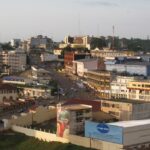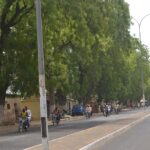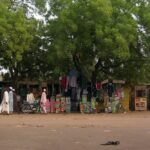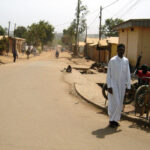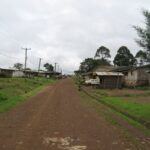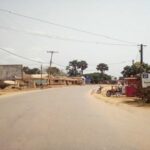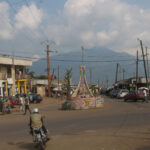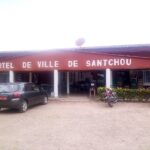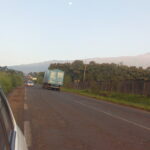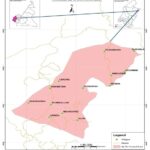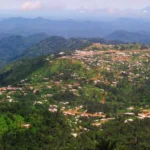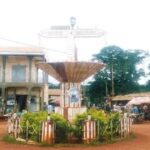Kumba

Nestled in the heart of the Meme department in the Southwest Region of Western Cameroon, the vibrant city of Kumba, colloquially known as “K-town,” stands as a testament to both historical richness and modern development. This bustling metropolitan area has captured the attention of residents from neighboring villages like Mbonge and has emerged as a melting pot of culture, commerce, and history. With its diverse population and strategic location, Kumba has become an urban hub that effortlessly blends tradition and progress.
| Country | |
|---|---|
| Province | Southwest Region |
| Division | Meme (department) |
| District | Central Kumba |
| Elevation
|
240 m (790 ft) |
| Population
(2019)
|
|
| • Total | 144,413 [1] |
Etymology: Unveiling the Roots
The very name “Kumba” carries with it a piece of history and culture. Originating from the Bafo word “Bakumbè,” meaning “umbrella tree,” this etymological connection highlights the city’s deep-seated ties to nature. Just as an umbrella tree provides shelter and protection, Kumba has served as a haven for its inhabitants for centuries.
A Glimpse into History
The foundation of Kumba is steeped in local mythology, attributed to the hunter Midiki Bokeng. The town’s history comes alive through monuments erected in honor of Midiki Bokeng, situated around the iconic Town Green. Kumba’s origins trace back to being a Bafo tribal capital, forged during the Mediki wars. Mediki, a Bafo native, was sent by Bafo chief Nguti to confront rival tribes, a mission he accomplished with remarkable success. Collaborating with Eseme Modu, Mediki expanded the territory, capturing regions as distant as Ekombe.
Kumba’s historical significance stretches through German and British colonial periods. The city was a pivotal point during the Rio Del Rey Division era, and its prominence continued into the British reign. The title of paramount chief of the Bafo was passed down through generations, testament to the enduring legacy of Abel Mukete, John Mukete, and Nfon Victor E Mukete.
Tragedy also left its mark on Kumba’s history, notably the mass shooting on October 24, 2020, that claimed seven lives and left thirteen injured, a somber reminder of the city’s journey.
The Evolution of Kumba’s Economy
Kumba’s economic landscape is a captivating blend of trade and industry. Famed as a trade center for cocoa, palm oil, rubber, and timber, the city’s role in Cameroon’s economic tapestry is indispensable. Its central location has earned Kumba the reputation of a commercial nucleus, evident in its bustling markets such as Kumba Market, Fiango Market, and various smaller markets fueled by local farmers.
Nigerian traders, predominantly from the Igbo and Yoruba communities, have found a foothold in Kumba, contributing significantly to its trade activity. The Kumba City Council oversees trade, a cornerstone of the city’s revenue, attracting businesspeople from across Cameroon, Nigeria, Equatorial Guinea, Gabon, and Chad.
Geographical Charm: Beyond the Urban Landscape
Kumba’s allure extends beyond its urban center. It rests on flatlands surrounding the Buea Road region, flanked by hills embracing Fiango and Mbonge Road. The city’s picturesque beauty is enhanced by three prominent water bodies: Lake Barombi Mbo, a captivating volcanic lake that beckons tourists; Kumba Water, meandering through the city; and Mbanga Water, affectionately referred to as the Mabonjise.
Governance and Administration
As the capital of the Meme department in the Southwest Region, Kumba operates under a decentralized system of governance. It is divided into three sub-divisional councils: Kumba 1, Kumba 2, and Kumba 3, each helmed by a local mayor. A Senior Divisional Officer and government delegate play pivotal roles in the city’s administration.
A Confluence of Transportation Networks
Kumba’s strategic positioning makes it a transportation nexus. The city marks the terminus of a branch railway of the Camrail’s western system. It boasts three major motor parks located in Barombi Kang, Fiango (Three Corners), and Mbonge Road (Mile One).
Embracing Diversity: People and Culture
Kumba’s cultural tapestry is woven with the threads of various languages. English, Pidgin, French, and indigenous tongues like Bafaw, Bakundu, Bakossi, and Mbonge, shape the linguistic mosaic. The Bafaw and Bakundu ethnic groups have roots entrenched in Kumba, though the city’s cosmopolitan nature has blended cultures over time.
